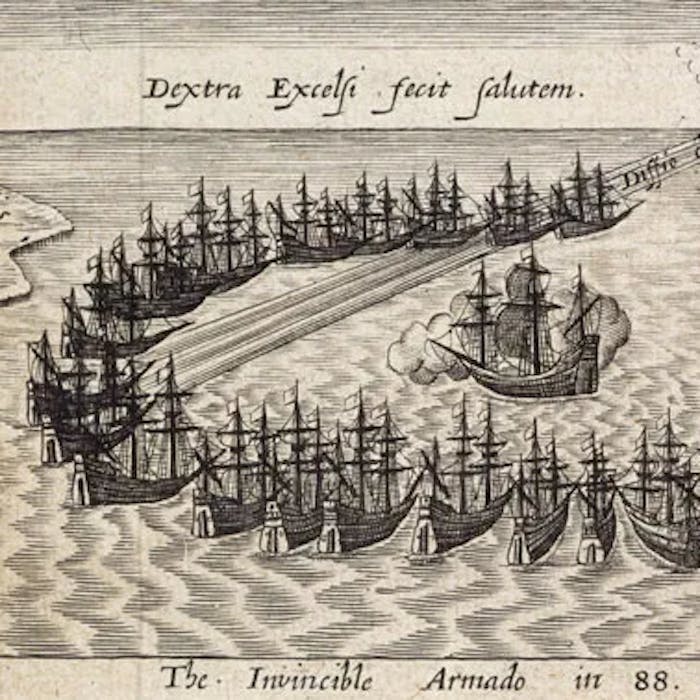
The Spanish Armada - a triumph for the English Queen
The Spanish Armada set sail in July 1588, with the mission of overthrowing the Protestant Queen Elizabeth I, and restoring Catholic rule over England. Over 100 ships were gathered with around 30,000 men onboard. The English fleet, commanded by Sir Francis Drake, was prepared to meet the attack and eventually saw off the invasion with the loss of many Spanish vessels.
The Church of England had broken away under Henry VIII in the early 1530s, and his eldest daughter Mary, who eventually succeeded him, married King Philip II of Spain in an attempt to re-exert Catholic influence through a suitable heir. But when Mary died childless in 1558, her protestant half-sister Elizabeth I took the throne, and Philip decided to propose marriage to her as well.
Elizabeth appears to have deployed delaying tactics, not offering a straight answer, and during her procrastination, English ships captained by privateers like Francis Drake were busy plundering Spanish ships. Although heroes to the English, Drake and his colleagues were villains for the Spanish, particularly as their behaviour had the full approval of the queen. At the time, England was also competing with Spain for North American territories and openly supported Dutch protestants revolting against Spanish occupation.
When Elizabeth I executed the Catholic Mary Queen of Scots in 1587, Philip was personally angered and, wanting England for himself, decided to invade. The preparation required for such a venture was huge. Cannons, guns, powder, swords and a whole host of other essential supplies were needed and it was difficult for the Spanish to keep the Armada plans a secret.
The Spanish fleet set sail in July 1588. Almost 130 ships had gathered with approximately 30,000 men on board. On 19th July, an English force led by Drake left Plymouth to meet the approaching Armada. However, when Drake got his ships into the Channel, there was little he could do to inflict much damage, and the crescent-shaped sailing formation they adopted ensured Drake wasted a lot of ammunition firing fruitlessly at the Armada.
After five days of constant cannon exchanges, the Spanish began to themselves run short of ammunition. They also had planned to pick up extra troops for the invasion, so, on 27th July, they anchored just off Gravelines, near Calais, to wait for these men to arrive. The English exploited this vulnerable situation. Just after midnight, eight “Hell Burners”, (old ships loaded with anything that would burn), were set adrift into the resting Armada. Many Spanish ships cut their anchor cables and sailed out to sea to escape.
But the English fleet blocked off any chance for the Armada to retreat back down the English Channel, and so the Spanish ships could only head in one direction, northwards to Scotland. Insufficient supplies, no anchor cables and stormy weather left them exposed. Many were dashed on to the rocks with great loss of life. Those that survived headed round the north of Scotland to Catholic Ireland, and took shelter in what is now called Armada Bay, just south of Galway. All who went ashore were however attacked and killed by the Irish.
When the tattered Armada eventually returned to Spain, it had lost half its ships and three-quarters of its men - over 20,000 Spanish sailors and soldiers had been killed. On the other side the English lost no ships, and only 100 men in battle.
The victory over the Armada was greeted throughout England as divine approval for the Protestant cause. Church services were held through the length and breadth of the country, and a commemorative medal was struck, which read, “God blew and they were scattered”.
Further reading
Links to external websites are not maintained by Bite Sized Britain. They are provided to give users access to additional information. Bite Sized Britain is not responsible for the content of these external websites.
